The Two Giants of Virtual Event Marketing
If you’re an expert, coach or consultant who’s looking to launch or scale your business, you may have heard that virtual events are a most powerful way of generating new clients in just a matter of hours and days. You might even be debating between the two giants in this category: the online challenge framework and webinar marketing, wondering which one will best suit you…
In order to make the best decision, it’s important to understand the differences between them. Keep reading to learn more about the challenge framework vs webinar marketing.
The Challenge Framework
The challenge framework is a digital marketing strategy that over the past few years has risen up to be the “cool kid” on the block. Here, coaches and consultants are able to create a community and fan-base from scratch – leveraging social media platforms as well as video and live streaming technologies to run a virtual “challenge” event. Challenge events are always limited in time (with most lasting just 3-7 days) where participants are given access to exclusive content, resources, and support throughout the duration of the challenge event. The event then typically closes with an invitation to participants to partner with the business further.
Webinar Marketing
Webinar marketing is a strategy often associated with elite and seasoned entrepreneurs. Here, coaches and consultants host virtual webinar events, aimed at powerfully selling products and services, as well as generate leads and new prospects. Webinars typically last just a couple of hours, where participants are taken through strategically curated content that leads them to a final closing offer.
The difference between Challenges & Webinars
On the surface, the challenge and webinar frameworks may not seem that dissimilar. Both are virtual events used to launch and scale a business, where coaches, consultants and experts can win a greater number of right fit clients. Both are time-limited events with content only lasting a matter of hours. The presented content is always carefully crafted to expertly lead participants through a very specific journey – acknowledging real-life issues and problems, building upon key concepts and teachings, delivering results in advance and closing with a final offer. Both marry together marketing and sales seamlessly through a single event.
However, these two frameworks are worlds apart in their underlying ethos and implementation, and I’d like to propose that they diverge in 4 fundamental areas.
When Vulnerability Is A Weakness or Strength
Although the Challenge and Webinar frameworks are both virtual events, they present very different levels of vulnerability to all involved.
Hard-wired into the Challenge framework, is the emphasis to engage in live training where the distance between the business and its audience are intentionally minimised. This means content is presented by the people behind the brand – and often this includes giving viewers an open window into a business’ flaws as well as its strengths. Although this might jar against the need to appear perfect – it actually leverages the values of vulnerability and authenticity, which can expediate the know, like and trust process at a phenomenal rate. With nowhere to hide, it naturally polarises raving fans from those who are wired totally differently, and this can be extremely powerful for finding right fit clients to work with. As well as removing the barrier between business and client, the Challenge Framework also facilitates peer to peer interactions between participants. Here the audience can not only engage with the host, but with one another – spurring each other on and sharing their own stories and questions along the way.
In comparison, the Webinar framework offers the opportunity for businesses to hide if wanted. Many elite webinars take the form of slide show presentations where you may never see the face of the voice behind it all. This means that it is possible to engage in a webinar presentation without ever seeing the face of the person sharing and teaching, although this is not not always the case. Braver webinar hosts will make a more personable appearance, but as the experience tends to be more orchestrated and controlled, only the host can typically see and share participant live-comments. Often there little (or no) opportunity for participants to connect and interact between themselves which can suit some. On the flip side, this can create a stirring sense of distrust as every part of the experience is curated and it can be hard to separate what might be real-time truth from self-generated hype. This puts the webinar host in a very powerful position – but under an extremely responsible position as well.
The Flexibility To Pivot & Change
Although both the Challenge and Webinar frameworks leverage just a few hours of content, the way content is distributed is different. Within the Challenge Framework, content is released daily, in chunks that can run from 15 minutes to 90-120 minutes a day. This creates space in between sessions where participants can engage via social media, and where it is possible for a business to re-evaluate and pivot mid-event. With live interaction and open feedback, it’s possible for experts to co-create content with their audience in real time, tailoring content as well as the closing offer. This enables businesses to change track within the event, based on real-time feedback, which can powerfully affect outcomes for both expert and audience. As the experience itself is akin to group coaching – it’s even possible to repurpose Challenge event recordings into a digital course format, creating the final product in the process.
In the Webinar framework, real-time audience feedback is often constrained. Although it is encouraged, it’s not always possible to view other people’s comments, and typically live questions cannot be appropriately addressed unless it directly relates to the closing offer. The offer itself, is often meticulously crafted pre-presentation, and there just isn’t the flexibility or scope to pivot with as much grace as within the Challenge Framework. Time is of the essence and although a level of engagement is always encouraged, it is strategic – building social proof and generating peer-pressure and FOMO (Fear Of Missing Out) to drive sales. When a presentation is heavily reliant on slides, it can be extremely difficult for webinar hosts to co-create the experience with participants and although this experience might not appeal to everybody, it does mean that Webinar content lends itself extremely well to being developed as ever-green content and pre-recorded promotional presentations.
Expert Teachers Verses Expert Selling
Webinars are often associated with expert and advanced businesses because of the skillset require to execute them effectively. Because the actual teaching content is the least important section of all when it comes to selling, you do not need to be a powerful teacher to leverage the webinar framework. However, you do need to be a powerful sales person. It’s not uncommon for the closing section of a Webinar where the final offer is made, to even exceed the time spent on teaching. Well-versed webinar hosts often keep the webinar running to encourage live participants to buy, and it’s not unusual for the sales pitch to run beyond the 45min mark if the host feels in the flow. Because the focus is on the sale, a poorly constructed Webinar can leave participants feeling like they were just part of a huge sales pitch, which in truth many poorly designed webinars are.
In contrast, the closing invitation to partner further with a business is a significantly small part of the overall Challenge framework. Typically restricted to the end of a challenge event, it is often preceded within a continuation of the training and teaching. Because of this, you do not need to be a powerful sales person to leverage the Challenge framework. It’s possible to give a soft pitch mid-way, leading to a stronger Call To Action by the event close. However, to really do the Challenge Framework justice, you do need to be a powerful teacher with the ability to lead people through a clear process where they can experience micro-wins along the way. Because of this, the Challenge framework can very much appeal to experts who are novices in business, as it can create an equal playing ground where expertise, not salesmanship, is promoted. However a poorly designed Challenge event can leave a coach or consultant feeling like they’ve shared their soul with their audience, without winning as many clients, or generating as much finance, as they had initially hoped for.
Low Tech Verses High Tech
Although both frameworks leverage tech, there are nuances in how much technology is required. At the heart of the Webinar framework, is the requirement to present virtually to an online audience. This can be most simply implemented through video conferencing technologies like Zoom, and because of this the webinar experience in itself can be simple and relatively low-tech.
The Challenge framework also requires content to be delivered virtually to an online audience, but it incorporates other requirements such as the space for participants to engage, catch-up on replay, and to remember that the next session will be running live imminently! Although it’s possible to run an effective challenge by just going LIVE on social media via a smart phone, most leverage video conferencing technologies like Zoom with professional challenges requiring a much more advanced tech stack that can include Social Media, Live-Streaming, Video hosting, Email sequencing. Here novices and pros separated out – and the danger here is that businesses might feel the urge to run before they can walk. However, because of its much more expansive tech stack the transition from Challenge event to LIVE Virtual Conference is relatively small, and if you can master Challenge Event execution, there isn’t really anything else that has the potential to stop you!
To Challenge It or Webinar Present - That Is The Question
So, which one is best? Hopefully you can see that the answer to that question will depend. It will depend on how you like to work and what your audience have the capacity for.
In short, the Challenge Framework is an excellent way to engage with potential clients, launch a business or scale exponentially. It’s also a great way to build brand awareness and create an audience of raving fans that are steeped in your brand culture and ethos. However, the Challenge Framework can be time-consuming to set up and manage if you aspire to create an event experience that really is an experience worth remembering! And there’s no guarantee that even with powerfully designed content, participants will follow through with the challenge. It has its risks and vulnerabilities. Traffic generation is a separate issue from Challenge design or execution – and when it comes to paid traffic, a unique campaign strategy is required that is Challenge event specific because of the time frames involved. Ever-green paid campaigns just won’t cut it. And although success never happens overnight, Challenges have been proven to out-perform Webinars, and because of this they can give off a slightly misguided sense that they are fail-proof. They are not. As many businesses have failed with poorly created Challenge events as those that have soared with them – and often the deciding factors have nothing to do with the strategy or framework itself.
Likewise, webinar marketing is famed for engaging potential clients and transitioning current clients up your value ladder. They can be relatively easy to set up and manage, and content can be recorded and reused in the future. They do not require a business to be upfront or personal, which can suit certain industries and audiences better, and they can be delivered in a 60 minutes session. This can appeal to time-limited individuals and coaches and consultants.
As you can see, both the challenge framework and webinar marketing have their pros and cons. Ultimately, the best strategy for promoting your coaching or consulting business will depend on your specific goals, audience, and resources. If you’re not sure which strategy is right for you, reach out to us here at Mits Griffin. And if neither the Challenge or Webinar frameworks appeal, there are other virtual event strategies worth considering too… But that’s another story…






